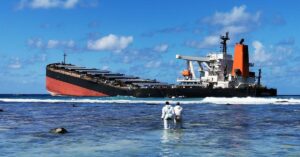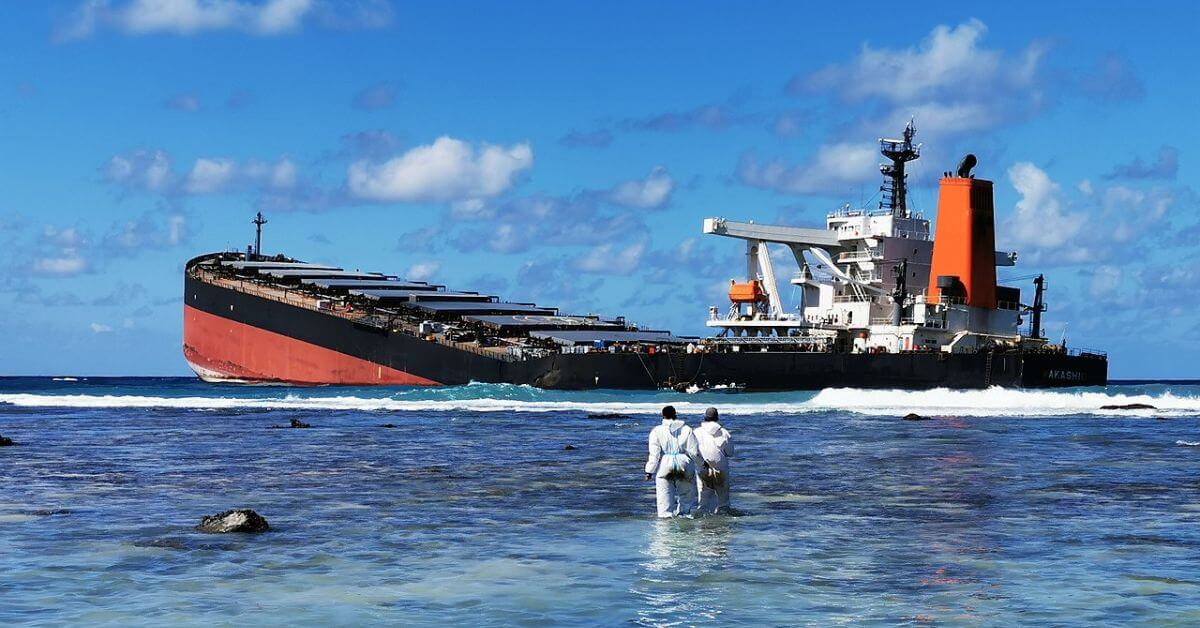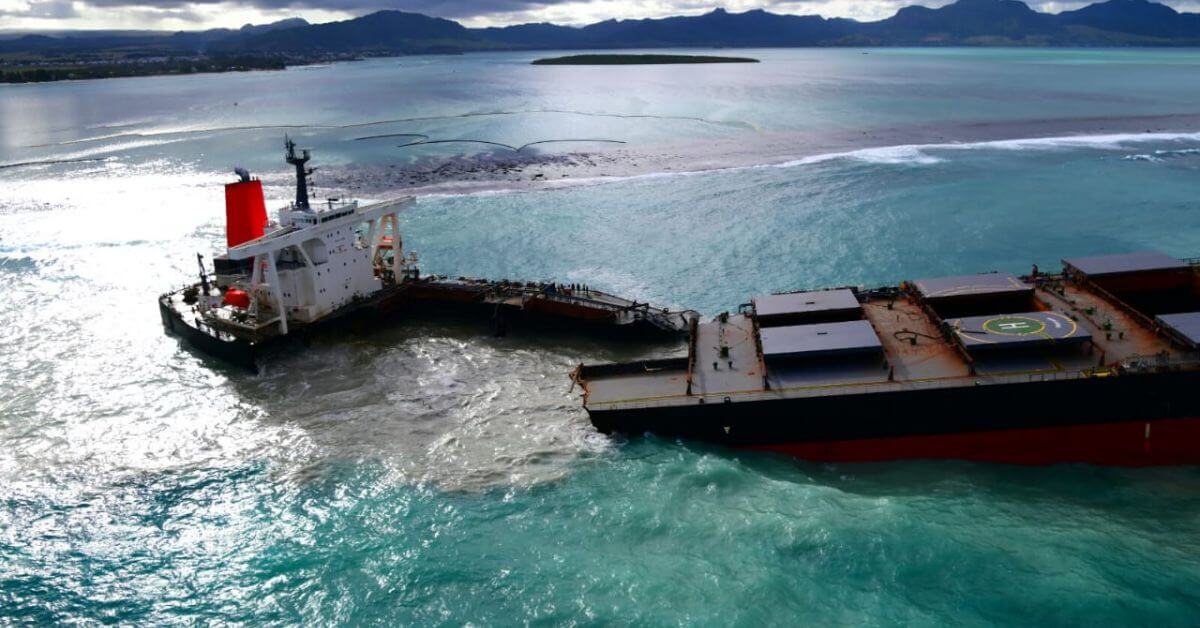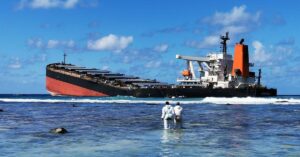Bulk Carrier That Spilled 1000 Tonnes Of Oil Off Mauritius Still Contaminating Mangroves After 3 Years

U.S. Fines Construction Company $80,000 For Polluting Cañas River In Puerto Rico
November 27, 2024
Sweden Asks Chinese Ship Suspected Of Sabotage Of Damaged Cables In Baltic Sea To Return For Investigation
November 27, 2024

It’s been three years since the Japanese bulk carrier MV Wakashio ran aground off the coast of Mauritius, spilling 1,000 tonnes of Very Low Sulphur Fuel Oil (VLSFO) into the water.
A new study led by Curtin University has confirmed that the oil is still contaminating the mangrove forests in the area, which are close to important conservation sites.
The lead researcher from Curtin’s WA Organic and Isotope Geochemistry Centre, Dr Alan Scarlett, said the team found that the oil in the Mangrove sediments closely matches the VLSFO spilt by the Wakashio in 2020.
Scarlett says that the local communities in Mauritius have spotted oil in the mangroves since the spill, but the recent study done by the university officially links the spill to the MV Wakashio.
The research team analysed samples from the mangroves, including a reference site that wasn’t affected by the spill. They found that the reference site was oil-free, but the other site contained oil from the ship’s fuel.
Although the oil had broken down and weathered over time, it was still present and could continue to harm the sensitive mangrove ecosystem.

Dr Scarlett says that understanding the contamination is important not only for the people of Mauritius but also for the rest of the world, as only little is known about how this new type of fuel behaves in the ocean after a spill.
The research team collaborated with the Woods Hole Oceanographic Institution and developed a special fingerprint of the spilt oil, which helped them confirm its presence in the mangrove soil.
They also compared how Wakashio’s VLSFO behaved in the environment as compared to conventional heavy marine fuels.
They found that more of the Wakashio oil had dispersed, evaporated or sunk than traditional fuel oils would, using advanced models. However, understanding the full impact on marine life is still difficult.
This study, published in the Marine Pollution Bulletin, focuses on the long-lasting effects of the Wakashio oil spill.
While much of the toxic material has broken down, the fact that oil remains in the environment shows how spills can have enduring impacts on delicate ecosystems like mangroves.
Mangroves grow between the land and the sea on the coast of an island. There are two types of mangroves in Mauritius.
Mangroves were spread all over the island, but deforestation for the construction of hotels has left narrow belts in the North and the West and thicker zones of trees on the Eastern coast. Mangroves were estimated to be around 2000 hectares in Mauritius in 2003.
Reference: Curtin University
Source: Maritime Shipping News


